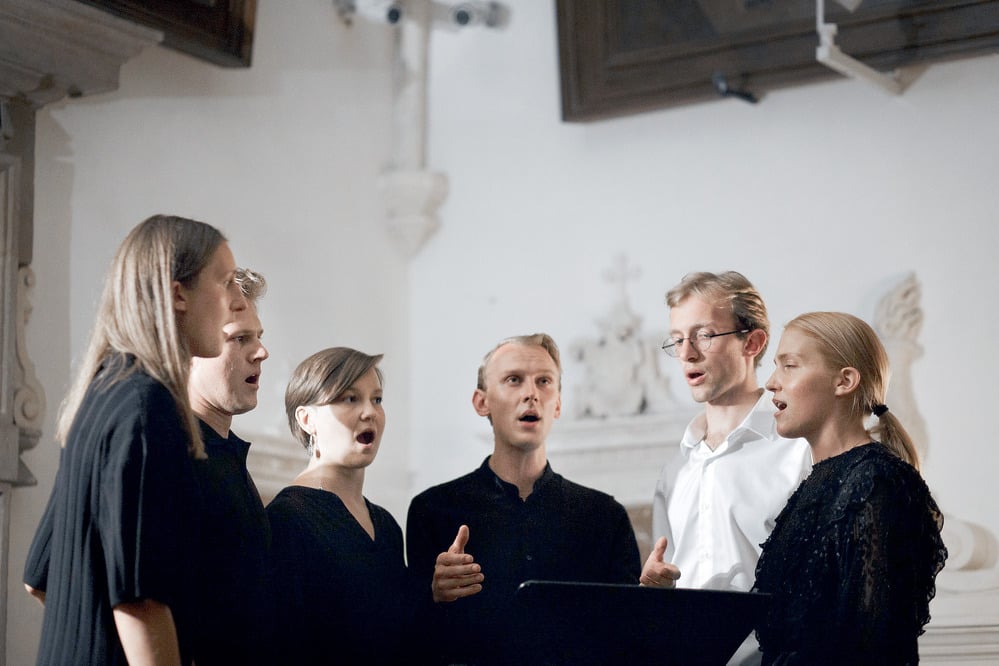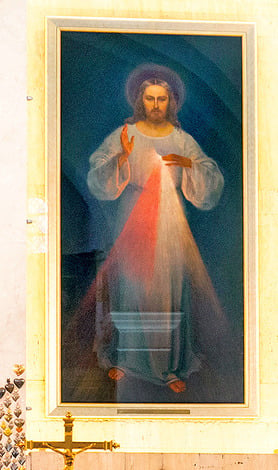
A platform that encourages healthy conversation, spiritual support, growth and fellowship

NOLACatholic Parenting Podcast
A natural progression of our weekly column in the Clarion Herald and blog

The best in Catholic news and inspiration - wherever you are!
Divine Mercy image, music to make a NOLA stop April 3-4
-

By Peter Finney Jr.
Clarion Herald
For the first time, a replica of the original image of Divine Mercy – a portrait crafted through the vision and instruction of St. Faustina Kowalska – will make an appearance in the Archdiocese of New Orleans as part of a U.S. tour of both the image and a sacred music concert by a young-adult choir from Vilnius, Lithuania.The painting, presentation and musical performance – sponsored by the Original Divine Mercy Institute (www.divinemercyinstitute.com) – will be held April 3 and 4 at 7 p.m. at St. Louis Cathedral.
The program, hosted by Daniel diSilva, who oversees the institute and who will speak about the painting’s history and provenance, will be the same each night. The program is free and open to the public.
History of original image
diSilva will speak on the history and significance of the original painting, research he turned into a documentary, “The Original Image of Divine Mercy,” in 2015. He is acknowledged as the world’s leading expert on the Divine Mercy image.
The majority of the program will be musical selections performed by a five-member choir, making its first U.S. appearance.“The reason I chose to bring them to the states and show my country this beautiful music is because the first time I ever went to the Shrine of Divine Mercy in Lithuania, this choir was singing, and it was just breathtaking and was so complementary to what I was looking at – the original painting of Divine Mercy.” diSilva said.
The interesting thing about the choir’s music is that although it is “not Gregorian chant to the layman, like myself, but when you talk to the director, she describes it as a combination of Gregorian chant and Lithuanian folk music,” diSilva said.
The reason for that, diSilva said, is that many Lithuanian folk songs grew out of the music locals heard on the streets wafting from the Franciscan and Carmelite monasteries.
“The locals are hearing this coming out of the windows of the monasteries, and they’re trying to imitate it,” diSilva said. “Their own folk music had a little bit of a twist. If you really knew what Gregorian chant is, you’d be able to identify the difference. They sing in Lithuanian and some in Latin.”
 The ‘Vilnius’ image
The ‘Vilnius’ image
The original image of Divine Mercy – also known as the Vilnius image – was painted in Vilnius, Lithuania, in the spring of 1934 by Polish-born artist Eugeniusz Kazimirowski.The distinguishing aspect of the painting, diSilva says, is that it was done with St. Faustina Kowalska standing directly behind the artist at the easel, offering her explicit instructions to help him replicate the image she had seen in her vision.
“It’s like the artist is doing a ‘perp’ drawing,” diSilva said. “He never saw Jesus. There are details in this painting that St. Faustina never gave to the artist, and St. Faustina asked Jesus, ‘Why are these details in the painting?’ Some of the things that the artist did were based on the desire of Jesus and how he wanted to be depicted but never came from St. Faustina.”
The painting depicts in detail St. Faustina’s mystical vision of Jesus, who asked her to “paint an image according to the patterns you see.”
Since Sister Faustina could not paint, she sought the advice of her spiritual director, Father Michael Sopocko, who had heard of Kazimirowski’s artistic ability.
For six months, the three worked together in a small room to transfer the vision of “The Merciful Jesus” to canvas. On occasion, Father Sopocko would step into the model’s role of Jesus so that St. Faustina could relate intricate details to the painter.
After its completion, di Silva said the portrait was “smuggled, bootlegged, abandoned stolen, forgotten, ensconced and rolled up” for transport across Communist borders. After almost 70 years, the portrait was brought back to Vilnius by two nuns and handed over anonymously to a local priest.
Careful restoration
The painting underwent meticulous restoration and is now venerated above the main altar of the Sanctuary of Divine Mercy in Vilnius.diSilva was in a “Catholic funk band” in 1999 when he wandered into the small church in Vilnius – at the urging of an anonymous priest, who met him in a pub.
“Tonight, you sleep with Jesus,” the priest told him, prompting diSilva to wonder about his personal safety.
“Everybody who knew anything about the Divine Mercy knew that the image would have to be in Poland,” diSilva said.
But, as it turned out, the painting in Lithuania was, in fact, the original image.
“I decided right there that I was going to do a documentary,” diSilva said. “The whole part of the presentation is to reveal what’s in the original and to understand what is not in the other paintings. What is not coming from him are little, tiny rays of mercy but a big wash of mercy for the world.”




